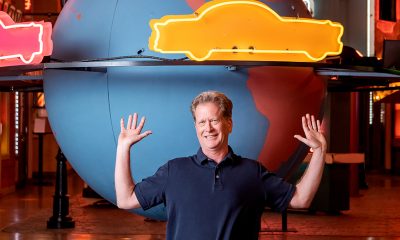Signage is too seldom recognized for its importance as an art form. However, period signage – specifically, 18th-Century placard signage that identified Colonial-era, New England taverns – inspires one Connecticut painter.
Howard, a graduate of the highly regarded Rhode Island School of Design, began her career as an oil painter. She set up her studio in an old mill near Providence, RI, which she shared with several artists. However, her career derailed when an arsonist burned down the mill; all of her work and supplies were destroyed. She temporarily jettisoned her career and instead focused all of her energies on her husband and two sons.
The family moved to Eastford, CT, and Howard brought extra money into the household by sewing custom slip covers after her kids went to bed. With her artistic interests rekindled, she also developed an interest in antiques. Browsing through an antique-related magazine one evening, she noted a picture of a well-worn tavern sign. This provided the necessary spark of inspiration.
“A 200-year-old sign offers an unrivaled patina,” she said. “I’m drawn to the weathered surface, the history, even the excessive punctuation.”
Advertisement
Howard plies her trade from a converted garage behind her family’s home, which was built in 1780. She primarily uses reclaimed pine barnwood or molding, which she purchases from a salvage dealer, and paints her creations with milk paint, which is sold in powder form and mixed with water. It adds authenticity to her craft because it replicates what many signmakers used during the colonial era.
“I used to use whatever kind of paint was available,” Howard said. “But, when I discovered milk paint, I found that it adhered better to raw wood. Milk paint is a safer, greener product, and I don’t have to work with bad odors.”
If she has to smooth her boards or remove layers of aged paint, she’ll plane the surface by hand. After the milk paint has sufficiently dried, she’ll topcoat it with a layer of tung oil.
Vintage taverns inspire Howard because of the folk-art influences that long-ago signpainters used to create their work. She’s researched colonial-era taverns throughout New England and the Northeast. When she finds documentation or images of a tavern’s original signage, she’ll recreate the sign with a subtle, personal twist. If she can’t find any records, she’ll create an image of her own invention. She letters her pieces freehand, using only a straightedge and her expertise.
Advertisement
“Perfection with lettering placement would make it appear too stiff,” she said.
Though her signs resemble rebuses – colonial-era signs that incorporated two or more pictograms or symbols that, when combined, identified a residence or place of business – Howard noted subtle differences: “Images I create often have personal meanings and, rather than trying to convey a specific message, they’re often open to interpretation. I may use a word that conveys how I feel about an image or, conversely, choose an image based on the name.”
Most of Howard’s signs ultimately reside over the mantles of her customers’ homes. She’s frequently asked to make exterior business signage, but she prefers to “leave that to the sign professionals. These aren’t exterior pieces, nor are they intended to be.”
Most of Howard’s projects are commissioned pieces. She approaches them with two sets of expectations, her customers’ and her own. She said it’s very important to begin a project with a clear understanding and a firm agreement.
Advertisement
“I want my customer to enjoy the end result, and I want a fair amount of artistic license.” Howard. “For a piece to be good, my heart has to be in it.”


 News3 days ago
News3 days ago
 Projects2 weeks ago
Projects2 weeks ago
 News2 weeks ago
News2 weeks ago
 How To1 week ago
How To1 week ago
 Real Deal4 days ago
Real Deal4 days ago
 Editor's Note5 days ago
Editor's Note5 days ago
 Photo Gallery2 days ago
Photo Gallery2 days ago
 Product Buying + Technology6 days ago
Product Buying + Technology6 days ago





















